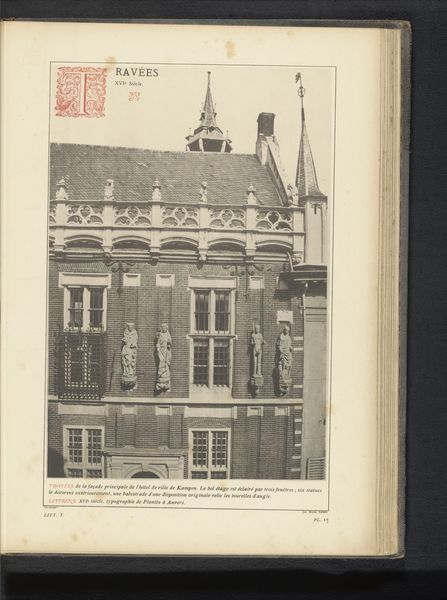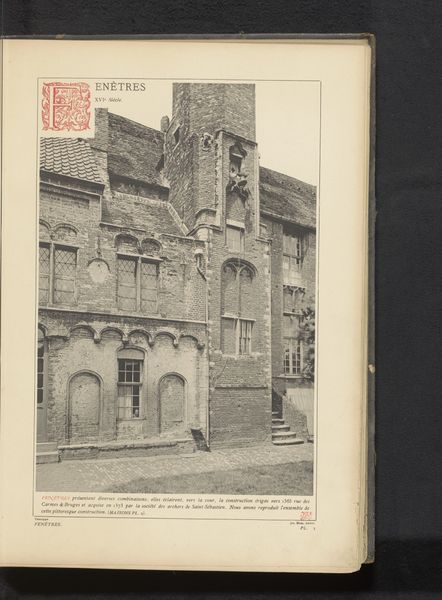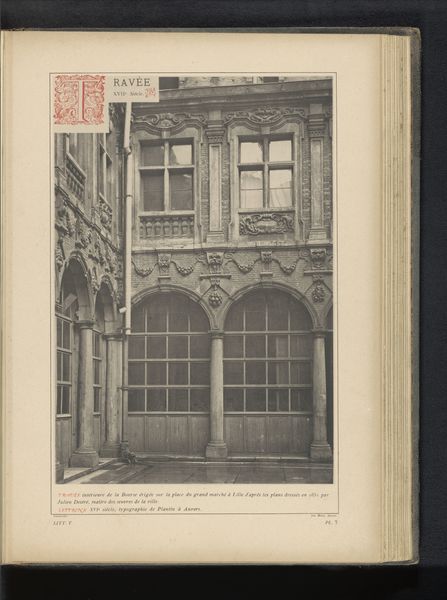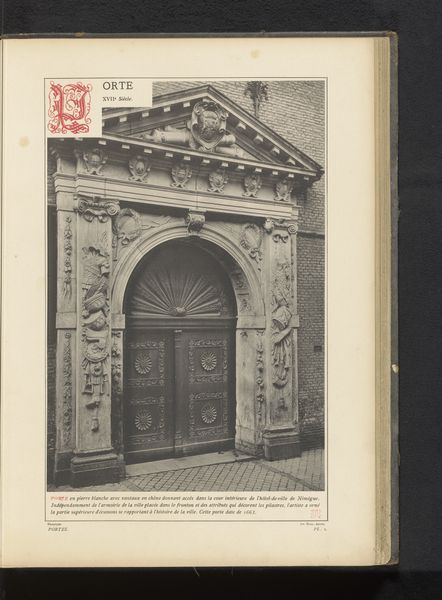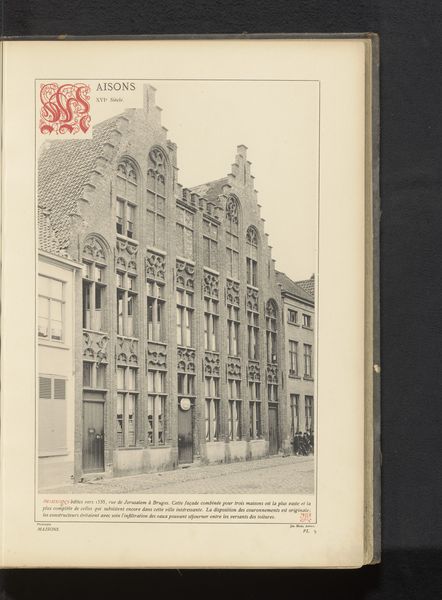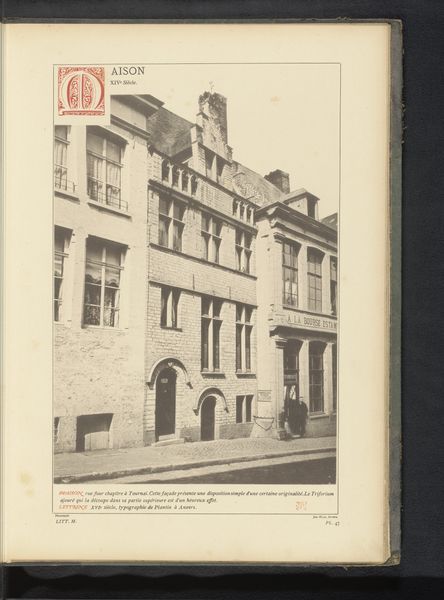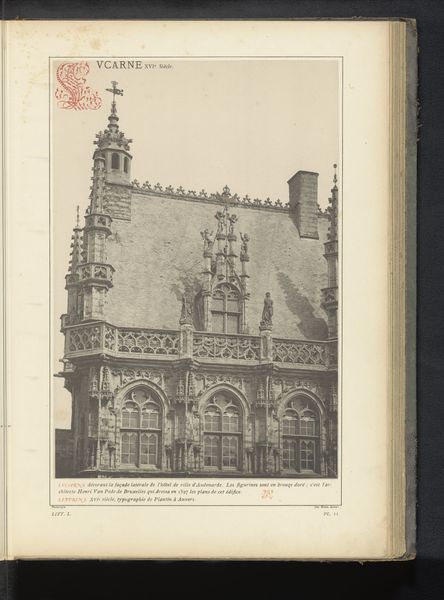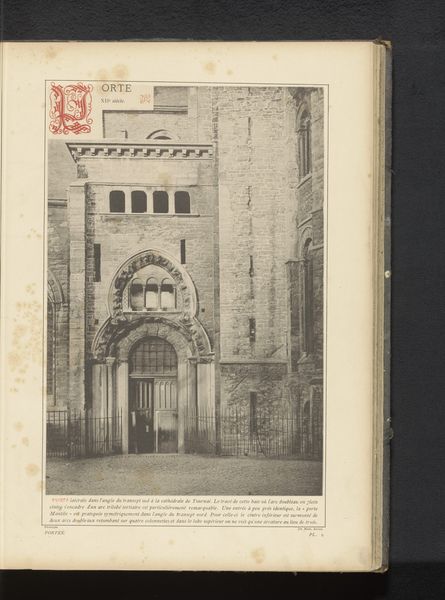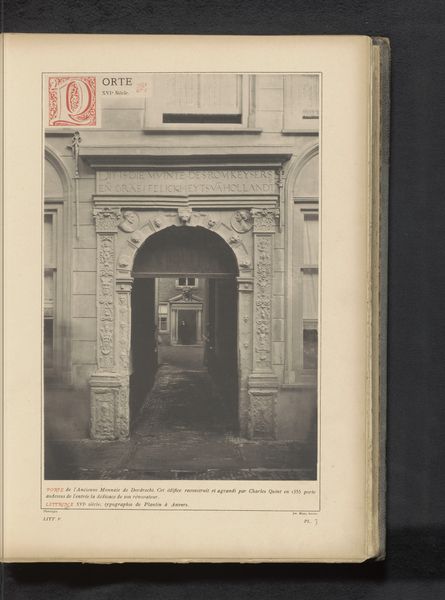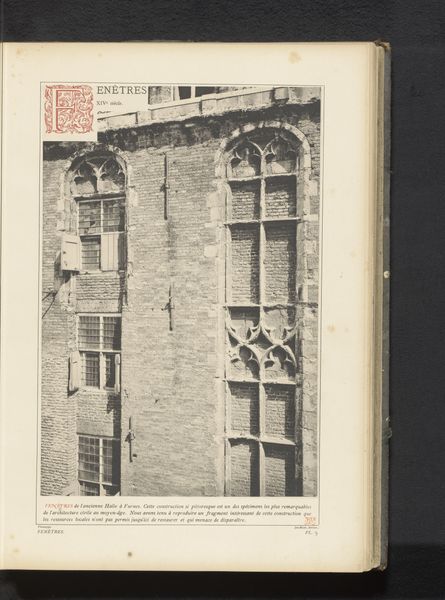
print, photography, architecture
# print
#
photography
#
cityscape
#
architecture
Dimensions: height 337 mm, width 230 mm
Copyright: Rijks Museum: Open Domain
Curator: This captivating photograph, taken before 1881, presents the "Deur van een woning te Delft"—"Door of a house in Delft." Note the intricate detail. Editor: My initial impression is somber. The monochromatic tones evoke a sense of history and perhaps a certain austerity in the depiction of this Dutch building. Curator: Indeed. Observe the balanced composition, the architect’s careful interplay of light and shadow across the facade. The eye is immediately drawn to the heavily ornamented doorway. Editor: The photograph is fascinating. One can sense the rigid social structures implied by such prominent displays of wealth. Consider how those crests may indicate hereditary privilege. It stands in stark contrast to the lived experiences of those in less prominent positions. Curator: But look at the craftsmanship, the elegant geometries embedded in the stonework around the windows and the main portal. Focus on the detail present in those familial crests. The formal elements achieve a fascinating balance between grandeur and domesticity. Editor: I wonder about the lives unfolding within those walls. Whose stories have been silenced or erased by such ostentatious displays? What part did this specific house, its inhabitants, have in colonial structures and trade in the area at the time? These homes are never just spaces; they reflect economic and socio-political structures. Curator: That interplay you identify is reflected in the composition. Notice how the photographer captures the texture of the stone. Semiotically, the stone speaks to a specific age and architectural design in Delft. Editor: This work feels especially charged given today’s conversations around class and resource accessibility. Examining such spaces opens a conversation about wealth and social stratification, offering a visual framework to consider systems of marginalization. Curator: Perhaps. My inclination, viewing the photograph, lands instead on the elegance of line, the harmonious arrangement of forms—the way a door, a frame, creates an entrance into the world depicted. Editor: Understanding the architecture and urban design as forms of materialized ideology opens space for understanding our cultural landscapes critically. Food for thought.
Comments
No comments
Be the first to comment and join the conversation on the ultimate creative platform.

